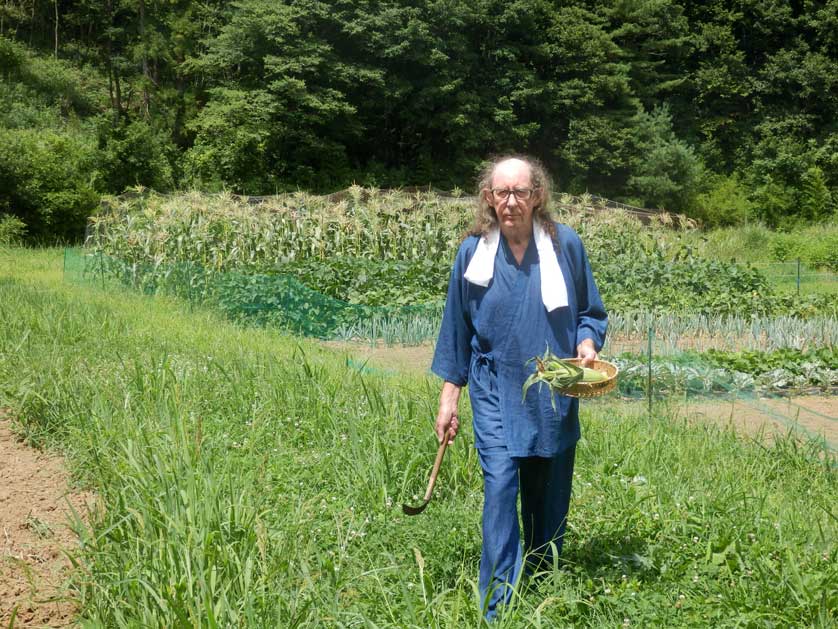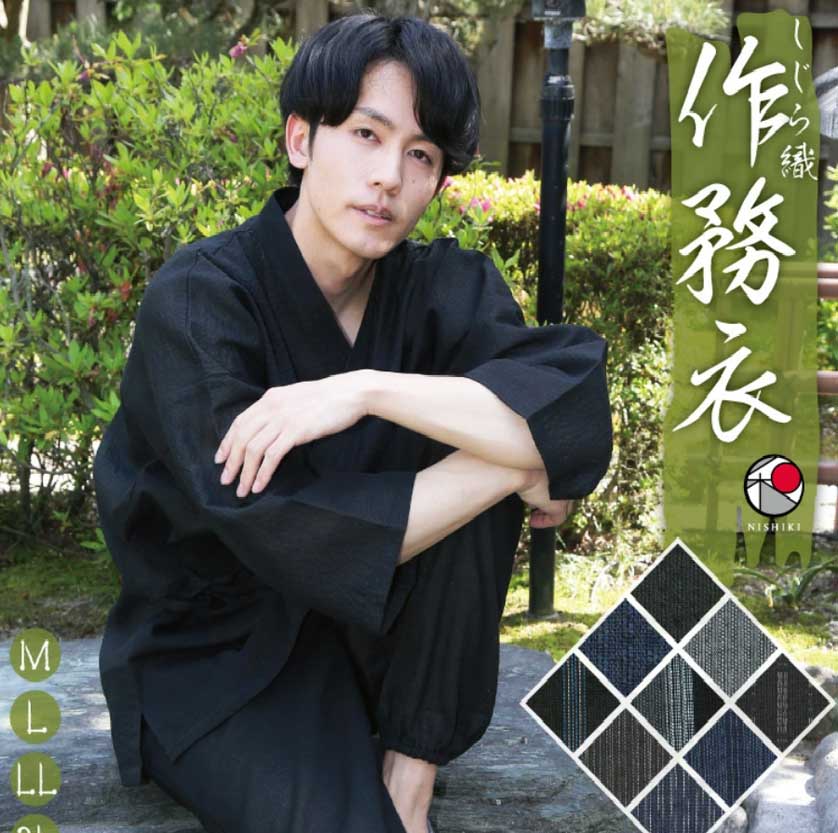Japanese Summer Dresses: Jinbei and Samue 甚平と作務衣
 |
| Jinbei are traditional, Japanese summer wear |
In Japan, beating the summer heat has been a major concern for centuries. From summer retreats in the mountains for the rich to traditional architecture that puts much emphasis on the most thorough ventilation to the creation of refreshing summer drinks - finding ways to alleviate the heat has always been on people's minds. So, it's certainly no surprise that the fashion designers of yore did their best to contribute. One such invention was the jinbei.
 |
| A jinbei worn in the Nagano countryside |
Jinbei 甚平
With its upper part loosely based on the haori, a traditional jacket worn by men over their kimono, the jinbei of today is a casual combination of short-sleeved light jacket and somewhat Western-style knee-length pants made of cotton or hemp.
The jinbei jacket is held in place by two sets of cords: the right side of the jacket is worn inside and fit into position by the set of cords to the left. The left side is worn outside and fixed by the cords to the right. It's the same principle that also the yukata, the light summer kimono employs. Just that in the case of the jinbei jacket, no obi belt is necessary - the cords do the trick.
The jinbei jacket typically has a pocket on the left side, jinbei pants may or may not have pockets.
Jinbei sets come with jackets and pants in the same color, usually solid indigo, blue, brown, or black with a muted or no pattern.
The seams connecting the sleeves to the jacket as well as the side seams of the jacket leave space for ventilation, assuring the airy quality of the jacket.
 |
| Relaxing in a jinbei in Japan |
History
The history of the jinbei is up for debate. Though its roots in the haori seem to be quite clear, some fashion historians claim that the design has been based specifically on the jinbaori, a very basic haori worn by samurai over their armor in order to display their kamon, the symbol of their allegiance.
Jinbei jackets more in line with today's style became a fashion in Osaka during the Taisho Period (1912 - 1926). Those were however knee-length and didn't come with trousers.
The current design - a short jacket and short pants - is said to date back to 1965.
 |
| Gaps between the jinbei jacket and its sleeves provide good ventilation |
Wearing Jinbei
Jinbei are traditionally men's clothing though jinbei for small children are also popular. Women seem to prefer the yukata over the jinbei when it comes to light summer dress.
Jinbei are considered to be very casual attire. They are typically worn around the house, in the garden or for short walks in the neighborhood, like say, to the convenience store.
While very few middle-aged men can be seen wearing jinbei in public, younger men attending summer festivals often see the jinbei as a comfortable alternative to the yukata. At summer festivals and firework displays you often see groups of young people with the girls in a yukata and the guys in a jinbei.
Some seniors on the other hand tend to show no hesitation in walking in public in a jinbei at all - they might take the train right to Ginza in a jinbei. Some may consider that odd but in general, the reaction is rather, "that's really cool".
 |
| Samue are traditional working dresses for monks and farmers |
Samue 作務衣
The samue comes with long pants but looks otherwise very similar to the jinbei. It has a totally different background, however. While the jinbei is an urban leisure dress, the samue is the traditional working dress for Buddhist monks performing gardening, farming, and other duties maintaining Zen monasteries. This type of work is called samu, hence the name samue for the dress.
Because of its practicality, the samue has also become popular with farmers and gardeners - from there it spread to the city streets as a fashion item. Light, well-ventilated samue are perfect summer fashion.
Since the samue has its roots and is still employed as a work dress, however, there are versions for the other seasons as well. Monks and farmers do need to go out working in the winter, too. So, there are heavy-duty samue that keep you warm even in freezing temperatures.
 |
| Purchase samue from GoodsFromJapan |
Purchase Jinbei and Samue & A Range of Other Clothing From Japan
If you want to buy a light summer samue, you will find it at Japanese department stores right next to the jinbei line.
For a winter samue, you are best visiting a work clothing store like Workman.
Or simply order jinbei and samue from GoodsFromJapan.
Purchase a range of Japanese clothing from GoodsFromJapan.
Related
Daruma Dolls - History & Symbolism
by Johannes Schonherr
© GoodsFromJapan.com

No comments:
Post a Comment